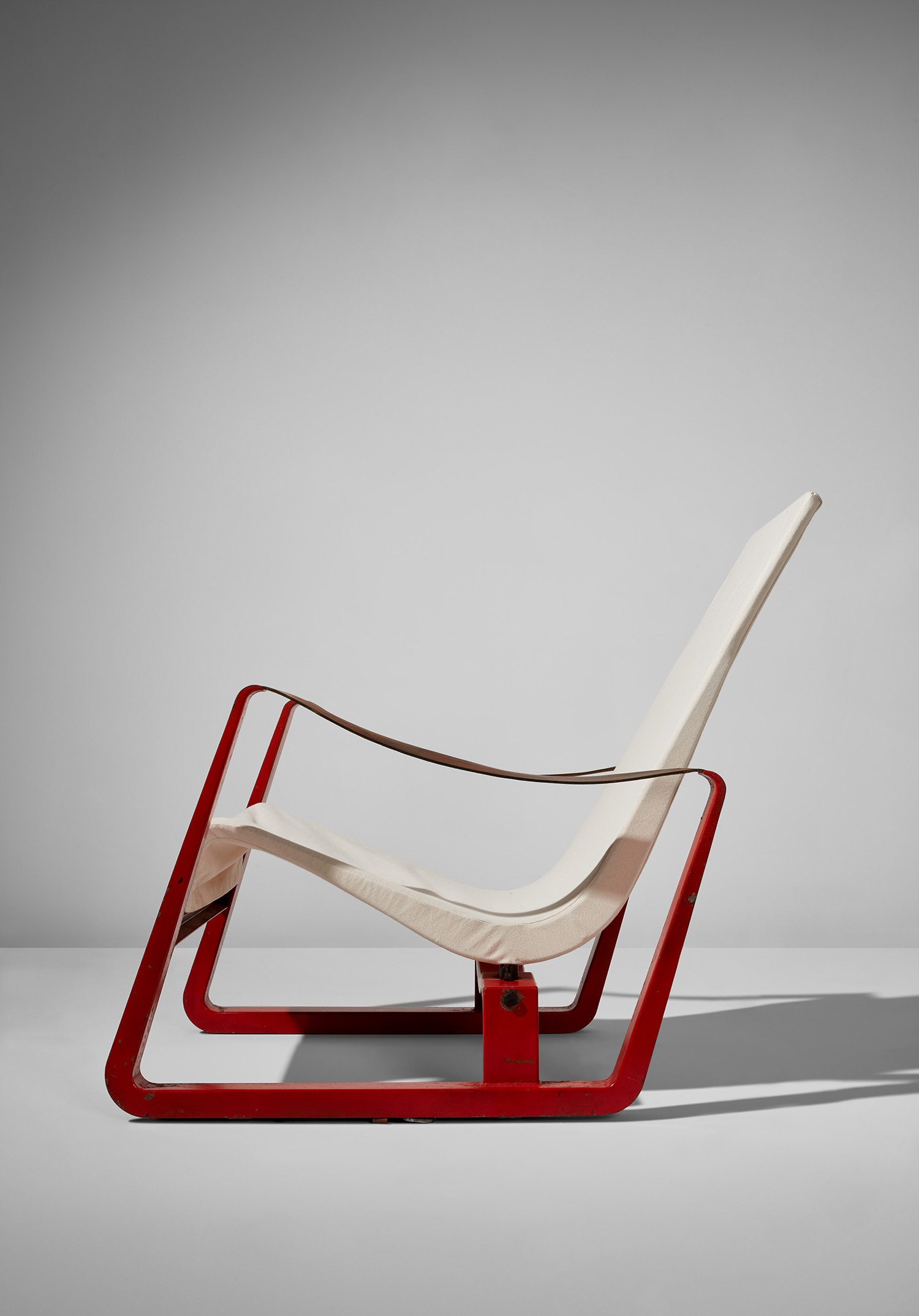







68
Jean Prouvé
"Cité" armchair
Full-Cataloguing
The ability to meld both design and functionality as seen in the Cité armchair is a characteristic instantly attributable to Jean Prouvé. His double identity as both engineer and designer provided him with a better understanding of the materials he worked with and meant “he was not frightened of new forms…he was able to design and build furniture, such as the early chairs and the armchair for the Cité Universitaire at Nancy, of a different quality from that being made by other avant-garde designers of the period” (Joseph Belmont in Peter Sulzer, Jean Prouvé: Œuvre complète / Complete Works, Volume 1: 1917-1933, Basel, 2000, p. 11).
Jean Prouvé
French | B. 1901 D. 1984Jean Prouvé believed in design as a vehicle for improvement. His manufactory Les Ateliers Jean Prouvé, located in Nancy, France, produced furniture for schools, factories and municipal projects, both within France and in locations as far flung as the Congo. Though he designed for the masses, pieces such as his "Potence" lamps and "Standard" chairs are among the most iconic fixtures in sophisticated, high-design interiors today. Collectors connect with his utilitarian, austere designs that strip materials down to the bare minimum without compromising on proportion or style.
Prouvé grew up in Nancy, France, the son of Victor Prouvé, an artist and co-founder of the École de Nancy, and Marie Duhamel, a pianist. He apprenticed to master blacksmiths in Paris and opened a small wrought iron forge in Nancy. However it was sheet steel that ultimately captured Prouvé's imagination, and he ingeniously adapted it to furniture, lighting and even pre-fabricated houses, often collaborating with other design luminaries of the period, such as Robert Mallet-Stevens, Le Corbusier and Charlotte Perriand.